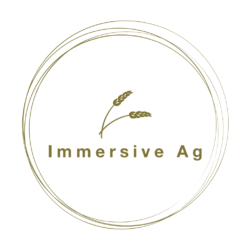Background
There is considerable interest in strategic deep tillage (e.g. deep ripping, spading) with or without agronomic amendments (fertilisers, organic matter) to overcome physical constraints and increase water and nutrient supply within the profile of Mallee sandy soils. To investigate the potential benefits of deep ripping and the inclusion of organic matter (OM), a replicated trial was established near Tempy in 2019.
Methods
Treatments
The trial comprised of five treatments to compare deep ripping only with inclusion plates and OM addition. All deep ripping treatments were implemented to a depth of 50cm with a tine spacing of 56cm. The OM used was a chicken litter compost blend, applied at 5t/ha (https://www.peatssoil.com.au), in the treatments listed in Table 1.
Management
The trial was sown to barley in both 2019 and 2020. Each season the trial received DAP S Z (16:17:0:8; 0.5%Zn) @ 62.5 kg/ha at seeding and 47 kg/ha of Ammonium Sulphate and a foliar application of copper, zinc and manganese was applied during tillering.
| Depth cm | Treatment | |
| Control (undisturbed) | – | – |
| Deep ripping | 50 | with rigid shank (Tilco) |
| Deep ripping | 50 | with inclusion plate (Tilco) operating 150mm below soil surface |
| Deep ripping | 50 | with inclusion plate (Tilco) plus OM surface applied |
| Deep ripping | 50 | with OM deep placed behind the ripping shank |
Results
2020 Grain Yield
Deep ripping with inclusion plates and/or OM applied produced a significantly higher grain yield than the undisturbed control in 2020. The grain yield of the deep ripping only treatment was not significantly higher than the control in 2020.

Cumulative Yield Benefit (2017-2020)
All treatments increased the quantity of grain grown in 2019 and 2020 by at least 1.5 t/ha, relative to the undisturbed control. However, there is no significant difference in cumulative grain yield between the ripping treatments.

Acknowledgement
This virtual field day has been developed as part of the Mallee Sustainable Farming (MSF) project:
“Facilitating enhanced knowledge sharing of Mallee sustainable farming practices”
This project is supported by the Mallee Catchment Management Authority (CMA), through funding from the Australian Government’s National Landcare Program.
The research featured in this virtual field day was completed as part of the Grains Research and Development Corporation (GRDC) funded project:
• Increasing production on sandy soils in the low-medium rainfall areas of the southern region.
The trials are a collaboration between Frontier Farming Systems and Mallee Sustainable Farming, CSIRO and UniSA.


